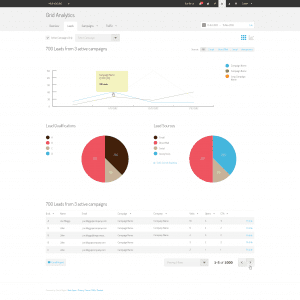Topics
Three Steps To Ensure Your MDF Allocation Drives Growth In 2015
 By John DeSarbo, ZS, and Darren Yetzer, Semdrive
By John DeSarbo, ZS, and Darren Yetzer, Semdrive
IT buyer behavior continues to change, and vendors are acting accordingly.
Customers increasingly look to online resources to help guide their IT purchase decisions. They research online, utilize social channels and avoid speaking with sales representatives until they are ready to buy. In response, the technology industry must make greater investments in digital marketing than ever before.
Since two thirds of high-tech revenue flows through channel partners, vendors need to improve their partners’ digital marketing capabilities as well as their own. Top industry analysts predict that IT customers will manage the vast majority of their commercial relationships via digital channels by 2020. Channel partners who don’t evolve to meet these new customer preferences are at risk — along with the vendors who depend on them.
As the industry prepares for what appears to be yet another challenging year, vendors must answer a fundamental question: Are your channel partners ready to market and sell to decision makers and influencers in ways that reflect how these customers prefer to buy?
With such fundamental changes in how technology is evaluated and purchased, high-tech vendors must rethink how they leverage their market development funds (MDFs) to help channel partners build and strengthen digital marketing expertise and capabilities.
The Struggle To Move From Traditional To Digital Marketing
Many technology vendors distribute MDF to channel partners based primarily on their sales performance — and provide little guidance on how to best invest those funds.
Unfortunately, channel partners — many of whom are accustomed to investing more in sales and engineering than marketing — often struggle with lean marketing teams, underdeveloped digital skillsets and antiquated tools. As a result, they tend to invest the bulk of their MDF on familiar, offline marketing tactics such as trade shows, customer events and print advertising.
When IT vendors do take steps to help their partners invest MDF in activities that are more in sync with customer preferences, they often do so with little regard for partners’ capabilities and often implement overly restrictive policies and arduous administrative processes. The end result is predictable — partners stubbornly maintain focus on familiar marketing tactics, leave money on the table and, as such, do not maximize the ROI on marketing funds.
It’s clear that the old approach to MDF allocation won’t cut it in 2015. Vendors can no longer simply allocate MDF solely to their biggest channel partners. Instead, they should use MDF in a progressive and strategic manner by investing in partners with high-growth potential and providing the right type of support given their online marketing capabilities.
Getting Your MDF Money’s Worth
Leading vendors have done their homework and realized that some high-growth partners need more digital marketing support than others.
Take for example a prominent global software provider who recently conducted a comprehensive assessment of its partners’ digital marketing capabilities in order to certify that MDF were invested effectively. After realizing that some of its high-potential partners needed help to take a new approach to demand generation, the vendor created a plan to help partners develop key digital marketing capabilities in search engine optimization (SEO), search engine marketing (or pay-per-click) and responsive web site design.
The vendor invited more than 50 channel partners to complete a comprehensive digital marketing assessment in areas such as SEO improvement and web content development. This evaluation enabled the manufacturer to identify capability gaps and determine where to best focus expert support, given each partner’s particular needs.
Refocusing MDF on the right partners and providing customized support had a dramatic impact. In only six months, the participating partners generated 58,000 new leads that resulted in $23 million in incremental, net new sales and a startling 640% return on the vendor’s MDF investment.
Prepare For What’s Ahead In 2015 And Beyond
It is clear that a one-size-fits-all approach to MDF allocation won’t be effective in today’s digital marketplace. Vendors should take three steps to optimize their MDF investment in 2015:
Step 1. Assess your partners’ digital marketing capabilities
Vendors should objectively evaluate each partner’s ability and willingness to utilize MDF to further their digital marketing strategies. A thorough assessment of a partner’s marketing competencies will help clarify which partners will be able to capitalize on shifting buyer preferences and which may resist inevitable changes.
Step 2. Segment your partners based on capabilities and overall growth potential
As the saying goes, “Those that got you here won’t necessarily get you there.” The time has come to rethink established partner segmentation models and consider more than historical performance and technical certifications. Vendors should categorize partners based on their focus on key trends that drive market growth, in-demand competencies and investment in the digital marketing capabilities that will yield success.
Step 3. Optimally allocate MDFs and provide tailored support to given needs
Over-allocation of MDF for the largest partners — regardless of their market focus and capabilities — is the equivalent of placing your chips on the roulette table and hoping for the best. Wise vendors will spend their MDF dollars strategically and invest in the right partners in the right way. Vendors should give more freedom to high-potential partners with superior marketing capabilities and more support to high-potential partners who need help to build foundational digital marketing capabilities.
It’s the call of the hour for vendors to use this strategic approach to channel marketing. Better MDF management will help partners build digital marketing expertise and grow their businesses, in turn allowing vendors to optimize their investment and achieve their primary objectives — accelerated growth and channel loyalty.
In the second part of this series, we’ll take a closer look at what channel partners can do to optimize the impact of their MDF spend in 2015.
John DeSarbo is a Principal at global sales and marketing consulting firm ZS in San Mateo, Calif., and the leader of ZS’s Sales Channel Strategy and Management practice. He has more than two decades of consulting and industry experience focused on sales and marketing strategy and operations. His areas of expertise include multi-channel go-to-market strategy, channel analytics, alliance and partner programs and sales force design. DeSarbo works with clients across a variety of business-to-business industry sectors, with a particular focus on the technology industry.
Darren Yetzer, Executive Vice President of Marketing and Sales at a channel-focused digital marketing agency Semdrive, oversees and partners with vendors to efficiently spend MDF. Before joining Semdrive, Yetzer held various channel marketing leadership positions at Microsoft for more than 15 years.



![The Art And Science Of Content Marketing [Infographic]](https://channelmarketerreport.com/wp-content/uploads/2014/06/the-art-science-of-content-marketing-300x300.png)


![Five Best Practices For B2B Mobile Commerce [Infographic]](https://channelmarketerreport.com/wp-content/uploads/2014/08/Screen-Shot-2014-08-04-at-1.40.57-PM-300x300.png)







